Working with a found object
I began this project with secondary research of doorstops. It started with finding who had been given patents, one of the first African American inventors to be handed credit. I then moved onto analysing the product, its daily use, and invisibility in a room until removed “an invisible practicality”. There is also significance to an open room and an open door, there are relevance’s to friendliness, willing to communicate and being inviting. During a global pandemic when everyone was in their rooms, doors shut, doorstops were not in use. The aesthetics and structure of door stops also interested me as when looking up designs, the internet was plastered with DIY’s and how to decorate your own doorstop and make it “prettier”.
In my physical project I decided to Papier Mache a doorstop to use up neglected and unwanted items in daily life, this not only matched my analysis of the doorstop but also the history behind the inventor. The Papier Mache project allowed me to explore into more fragile materials making door stops. I carved a loaf of bread into a doorstop to; it didn’t hold the practicalities of a doorstop even when it was toasted. Unappreciated and unvalued items with daily use related to the fact that Dorsey is one of the first African American inventors to have recognition for his work. Doorstops are a reminder of all the inventions that weren’t credited fairly due to the injustices in contemporary American Society.
Resolved pieces
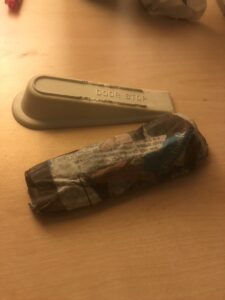
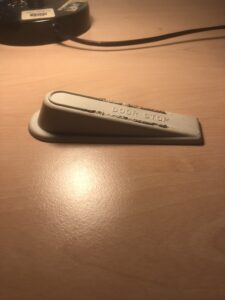
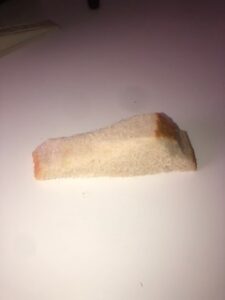
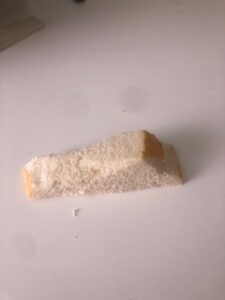
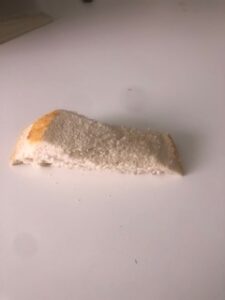
Toasted Resolved Piece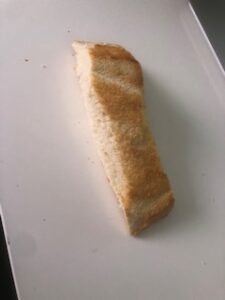

https://homeguides.sfgate.com/who-invented-the-door-stop-13412325.html
Sarah Browne, Door stops for the Daimler Art Collection, 2010
Making and Breaking a narrative
I started this project with toothbrushes, their structure, how they came about, if humans were the only species to brush their teeth. I also explored the use of toothbrushes as they could be physically used to make specific markings.
Artists George W.Hart and Alejandro Duran who have worked with toothbrushes were interested in representing the health and environmentalism concerned with plastic waste. After seeing a toothbrush on the floor and exploring further with a sketch, I liked the idea of having a lifecycle of a toothbrush, I researched and created a mock of it’s lifecycle.
My project concluded with an environmental twist as I began to see toothbrushes as plastic waste, I like the way my final ‘Lifecycle of a Toothbrush’ turned into a story book from a toothbrush’s perspective. This allowed me to express the ways in which we subconsciously pollute the earth with plastic, with a humourist take as the perspective of a toothbrush in one’s mouth is strange to see.
Evaluation and primary research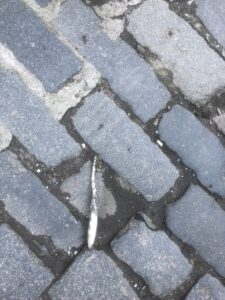

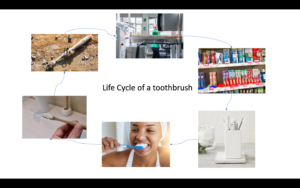
Secondary research
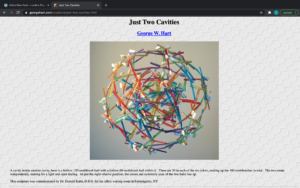
Resolved Piece- Lifecycle of a toothbrush notebook




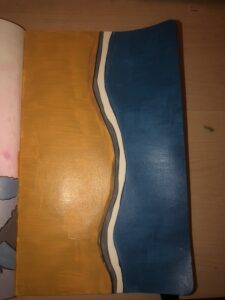
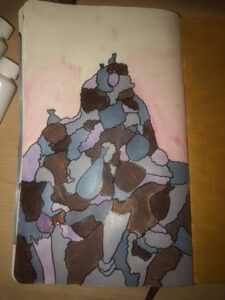
https://www.georgehart.com/sculpture/sculpture.html
https://prezi.com/k7bpwyfhhblt/the-product-life-cycle-of-a-toothbrush/ https://wowelifestyle.com/blogs/better-living/the-lifecycle-of-the-toothbrush
Mapping the Soundscape
My sound walk took me through busy streets and into the meadows in Edinburgh, noticing all the different sounds. I was fascinated by the way in which time has relevance to sounds, night/day even just 20 minutes could change.
I started to explore ways of expressing the sounds through collage and using different textures to represent sound, as it is a surrounding experience. However, I wasn’t happy with the turnout as it didn’t capture the time continuum.
After researching, I found the artist Kandinsky, the way he expresses his landscapes using long lines centring his pieces made me think about the long time continuum. I took influence from this and went back to my recordings to create an abstract line and shape drawing which represented the different sounds. Intersecting and overlapping just as sound does when you’re listening carefully, over the time continuum which gave structure to my piece.
Research and Development
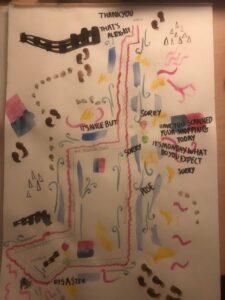
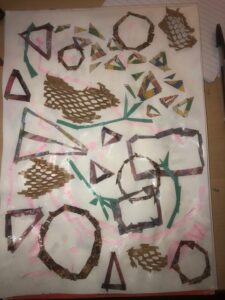

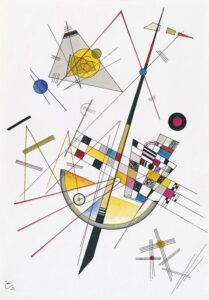
Resolved Piece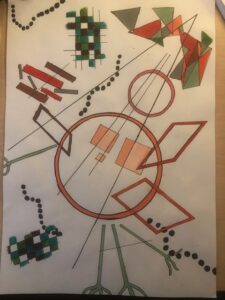
https://www.wassilykandinsky.net/work-50.php


Leave a Reply